When the sky is only clear in one region, that’s where you’re headed! But once you get there, then what?
So you’re headed down south, and you want to know: “Where is the best place to see the northern lights on the South Coast?” So we’ve put our heads together and gathered up a few of our favorite spots along Iceland’s southern coast for aurora hunting. From the rare to the luxe, we’ve got one in here for everyone.
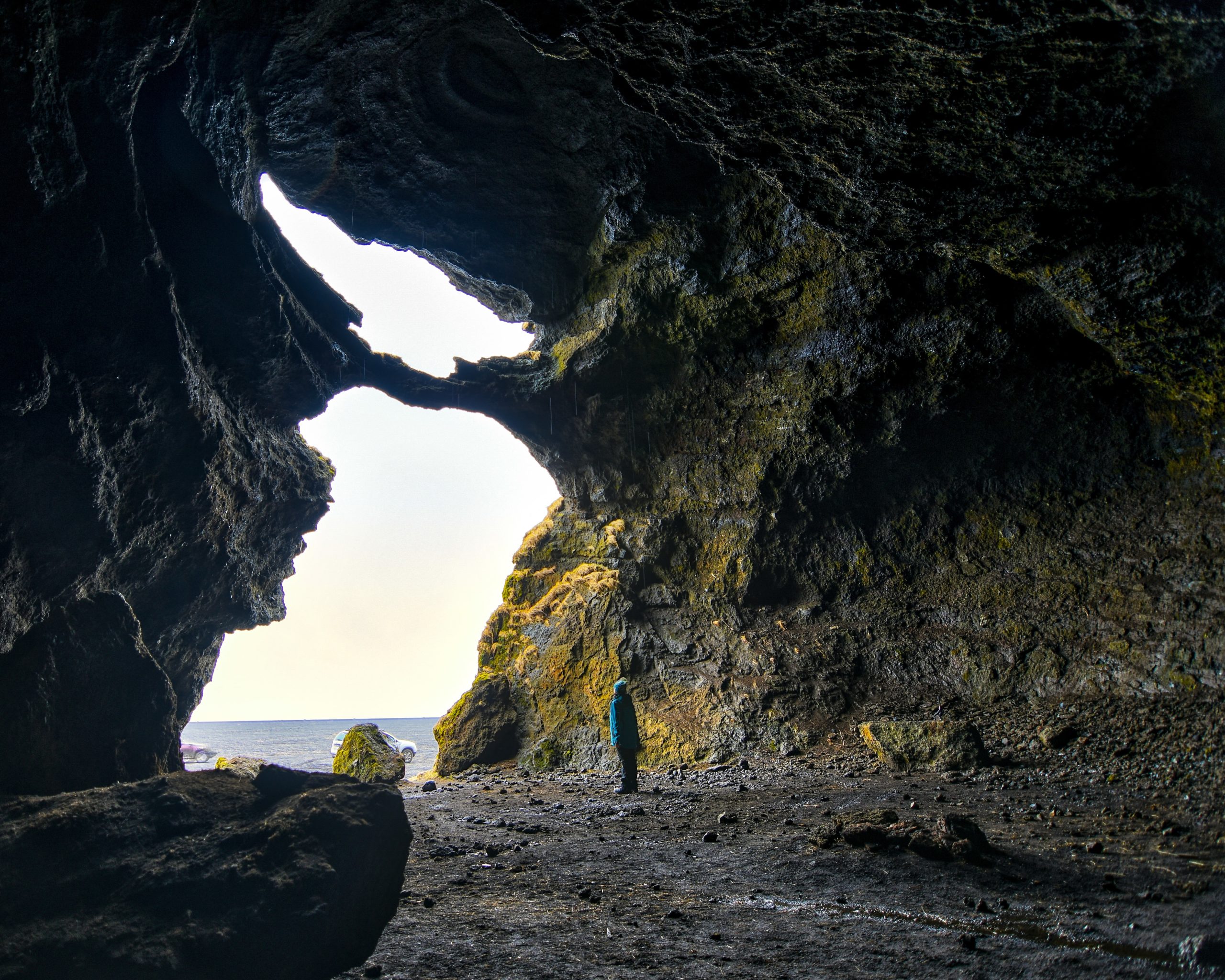
1. Gígjagjá at Hjörleifshöfði: The Yoda Cave
The south coast of Iceland is a dramatic landscape, no matter what season you visit. But if you’re looking for a spot a bit off of the beaten path to aurora watch from, look no further than the “Yoda Cave”.
The cave’s real name is Gígjagjá, but it is fondly known as “The Yoda Cave” since the entry to the shallow cave resembles a particular green individual. It is located in Hjörleifshöfði, which is an inselberg on the Mýrdalssandur plain near Vík.
Surrounded on all sides by vast black sand and seagrass flats, it is said that Hjörleifshöfði used to be an island, and the resting place of old Hjörleif himself. These days, you can drive up to it and enjoy multiple trails in its vicinity.
When inside the cave, you’ll find that the light from the outside illuminates the entry, creating a curiously familiar silhouette. Because of its shape, the cave entry is an amazing sight no matter when you visit. But imagine that shape filled with the majesty of dark sky, a million stars, and the dancing northern lights.. Not a bad spot.
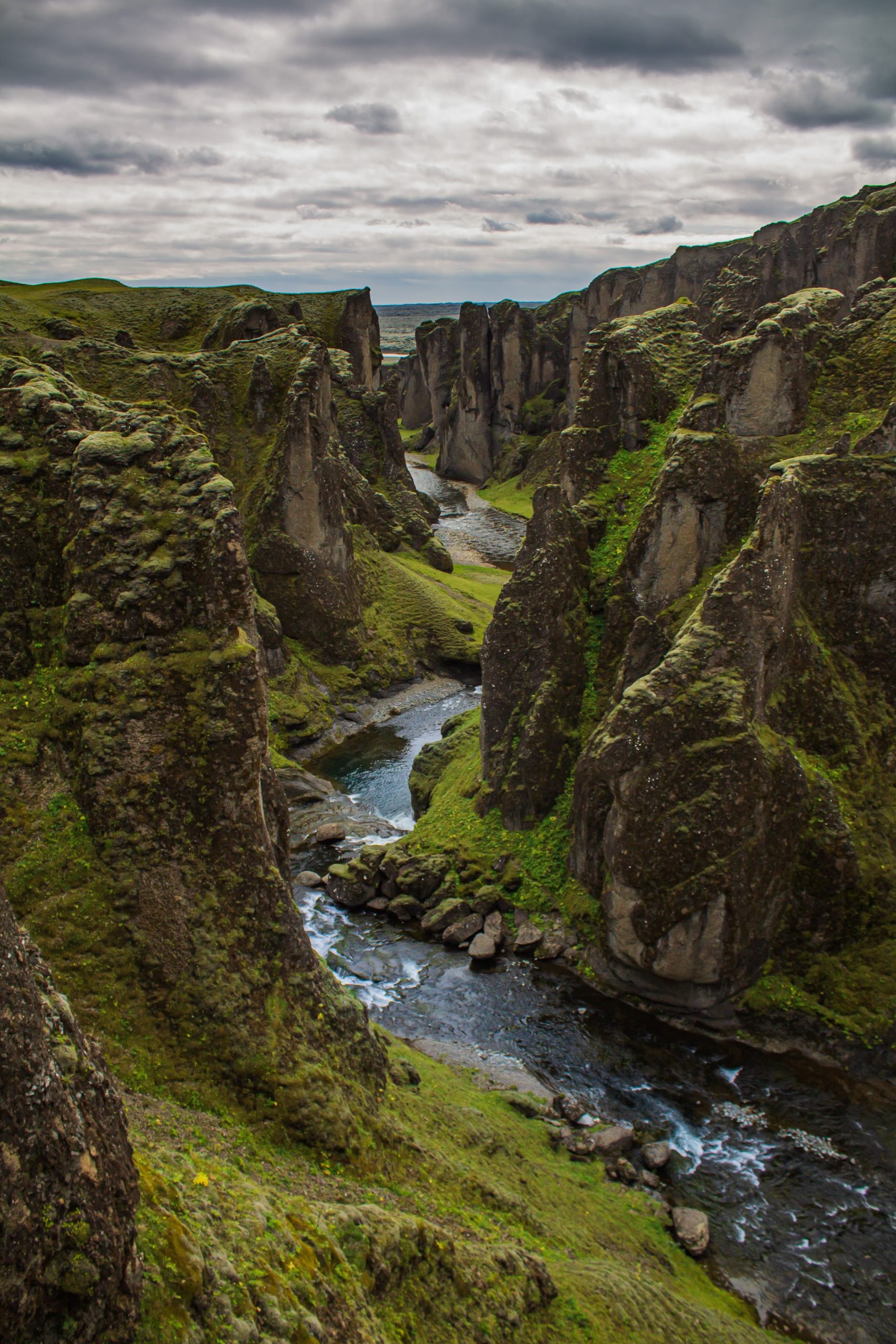
2. Fjaðrárgljúfur
At the more eastern edge of Iceland’s south coast, lies this ethereal canyon. Unlike many popular canyons, this one is not far from the main road. Right off of the village Kirkjubæjarklaustur, this canyon is nearly 2 km. long and houses the Fjaðrá river.
In good weather, the road to the canyon is accessible by all types of vehicles, and the hike along the canyon trail is easy and dry! This is key for those of us who are here to aurora hunt because unless you’re staying in Kirkjubæjarklaustur, you are probably not near a change of clothes.
The bottom of the canyon is home to an active river and a few waterfalls, not to mention protected vegetation and wildlife. Plus, the best view is on top. Fjaðrárgljúfur is a landscape photographer’s dream, so make sure you’re in the right place when the show starts!
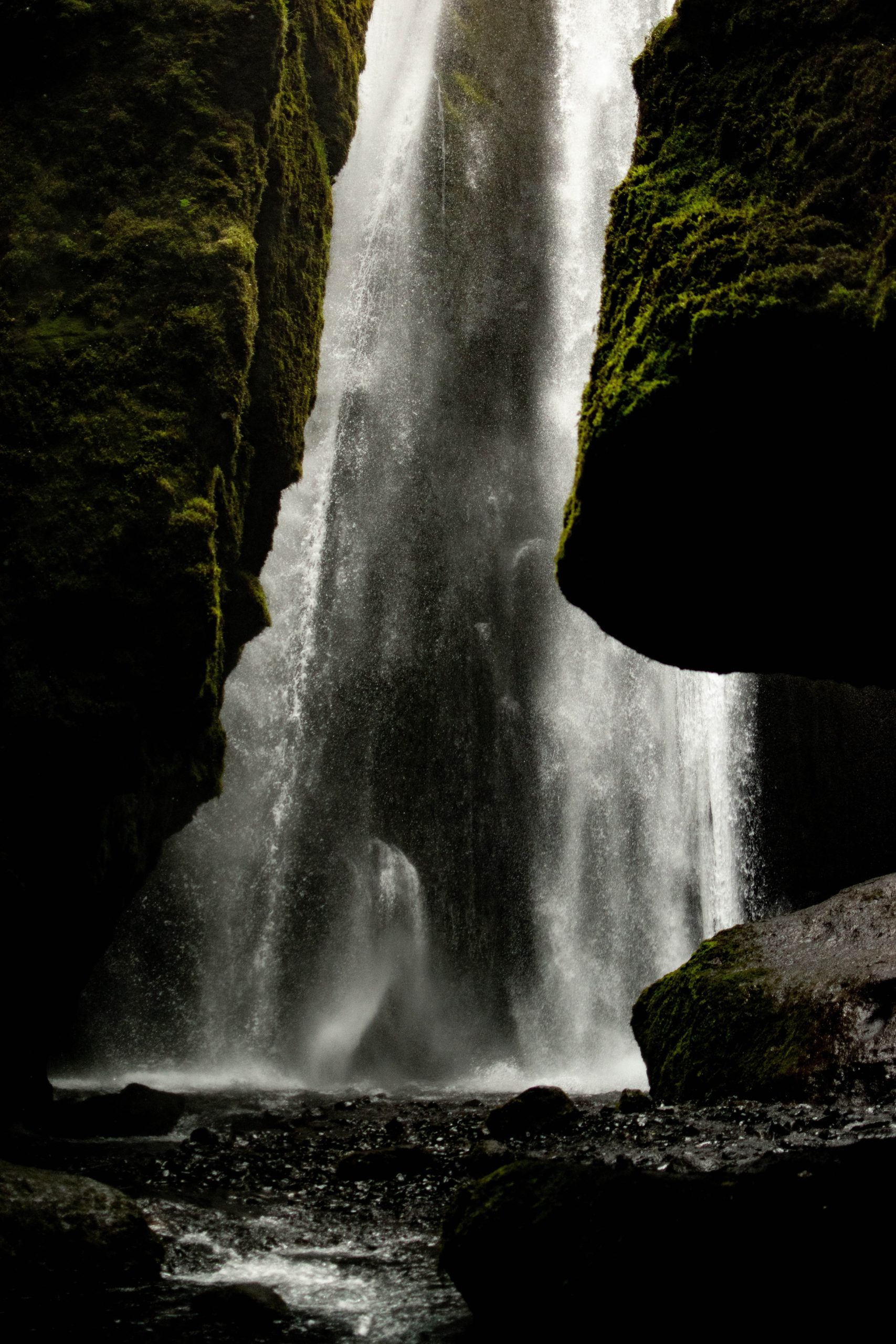
3. Gljúfrabúi & Seljalandsfoss
You probably already know Seljalandsfoss, but do you know its neighbor Gljúfrabúi? After walking behind the towering falls of Seljalandsfoss- an incredible spot in its own right – there’s a little known secret just a stone’s throw away.
Hidden in the same massive rock shelf that feeds Seljalandsfoss, this little waterfall is a hidden treasure of the south coast. When you approach, you see the stream of water first. Further down, you can see the falls peeking through the walls of the canyon. To access them up close, one must walk down the stream through the “halls” of rock.
Depending on the time of year and the conditions at the time of your visit, you may get wet! But once you make your way through the tiny canyon, you empty out into a natural room in the rock, where you can see the waterfall up close, and the sky up above.
Imagine seeing the aurora here, in Gljúfrabúi’s hidden chamber, with the mist of its spray all around. What’s the best place to see the Northern Lights on the South Coast? This is definitely one of them!
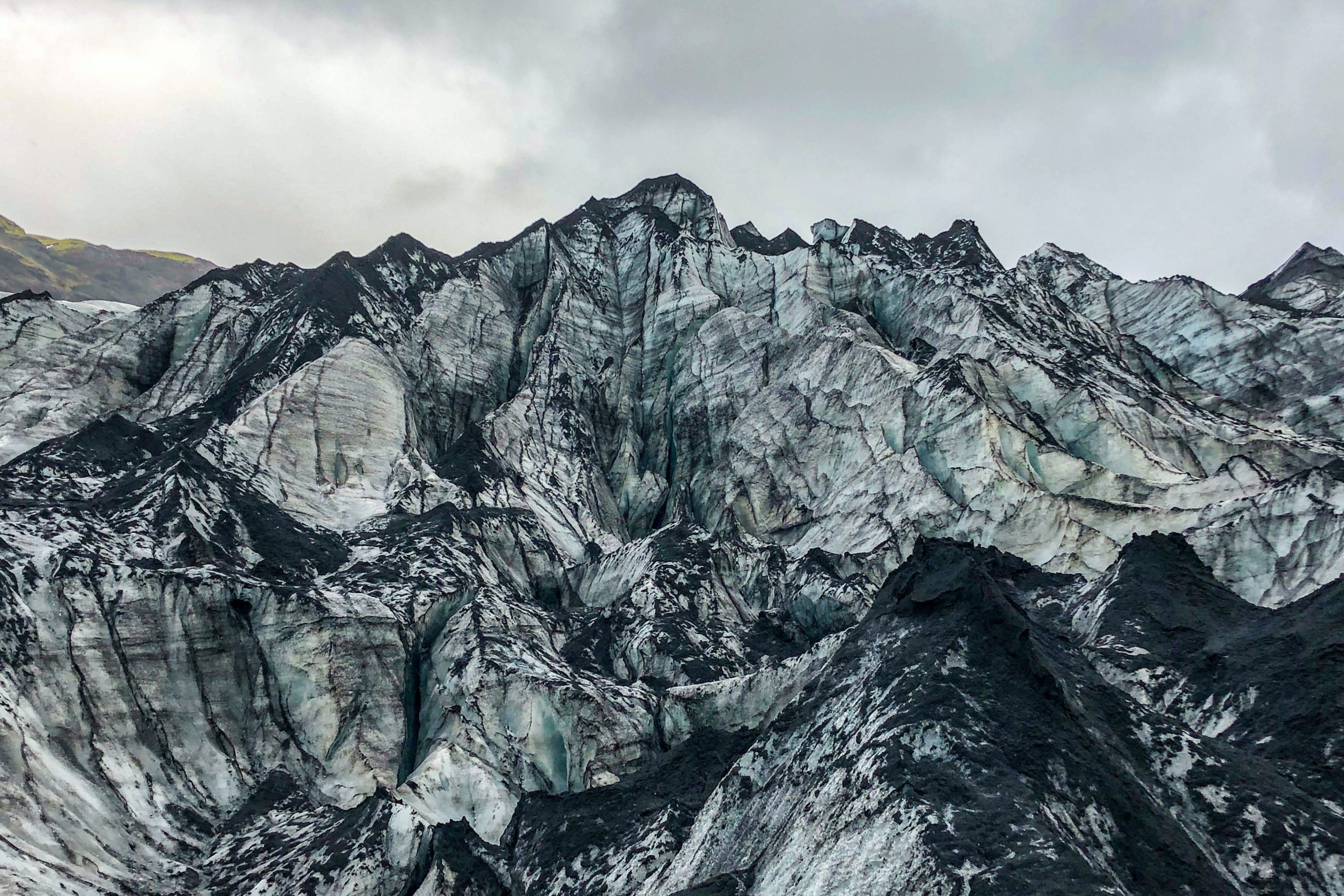
4. Sólheimajökull
Sólheimajökull is a piece of the larger Mýrdalsjökull, the south coast’s resident ice cap. (Mýrdalsjökull isn’t alone out here though, it shares the south with Vatnajökull, a glacier so big that it reaches through multiple regions!) This piece of the glacier is a popular location for glacier walking, ice caving, hiking, and just general wonderment.
This ice giant is incredible to see up close, and it is changing by the minute. One can visit the glacier on their own, but due to the extra training that it takes to traverse ice, it is only recommended to climb on with a guide.
Because of how quickly they are receding, one can’t make enough trips out to see the glaciers. They are visible reminders of how many gifts nature has bestowed upon us. …And seeing the lights in their presence is just one more gift on the neverending pile.
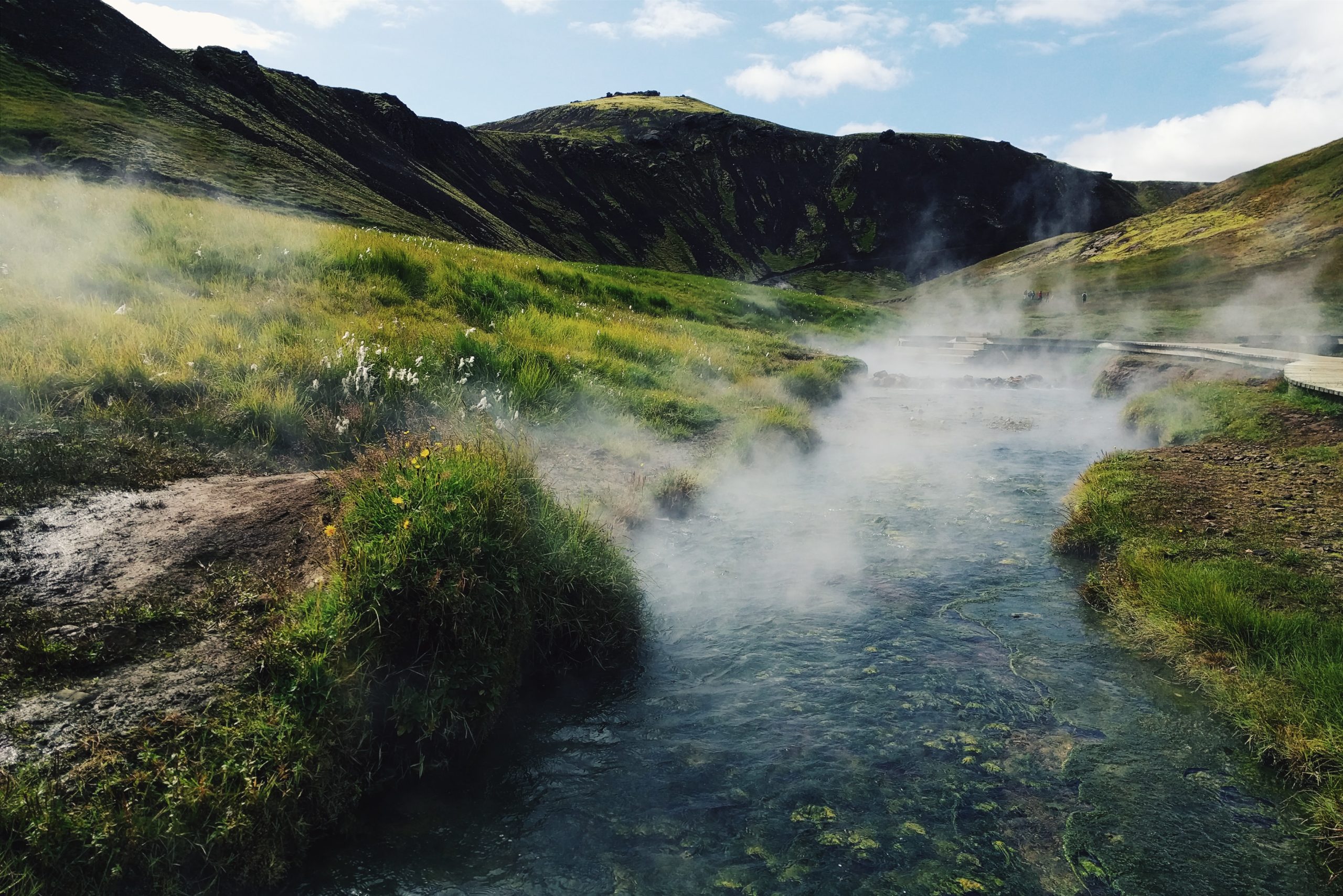
5. Reykjadalur
Reykjadalur is nearly 30 minutes from Reykjavik, so in some ways, it’s like the gateway to the south coast. Resting in the mountains above Hveragerði, Reykjadalur is a favorite of locals for its beauty, its accessibility, and its naturally hot water.
Reykjadalur means “Valley of Steam”, and it houses a geothermally heated river. This is a colorful area full of steam, bubbling mud, and incredible views as you ascend into these seemingly living mountains. It’s also mostly undeveloped!
There are maintained trails and even some protective boardwalk in the area around the water, but at this time there is no entrance fee, no buildings, and no facilities in this area. This could change over time, but for now, Reykjadalur is a place that belongs only to nature. The hike up takes around 45 minutes to an hour, and once you’re up there it is beyond heavenly to peel off your hiking gear and just lay in the warm river.
It is an incredibly restorative experience. Be careful, though! There are different temperatures throughout the water, so the further down the river you go, the hotter the water gets. This is mountain territory, so while the hike is not considered difficult, winter conditions can add some challenge to the terrain- even for the most seasoned hiker.
Things like early darkness, low clouds, and ice can make this an intense trek, so don’t forget your spikes and torches. But if you do make it up here, laying back in the hot water with your eye on the dancing sky- we’ll leave it to you to answer “Where is the best place to see the northern lights on the south coast?” I think we know what you’ll say.
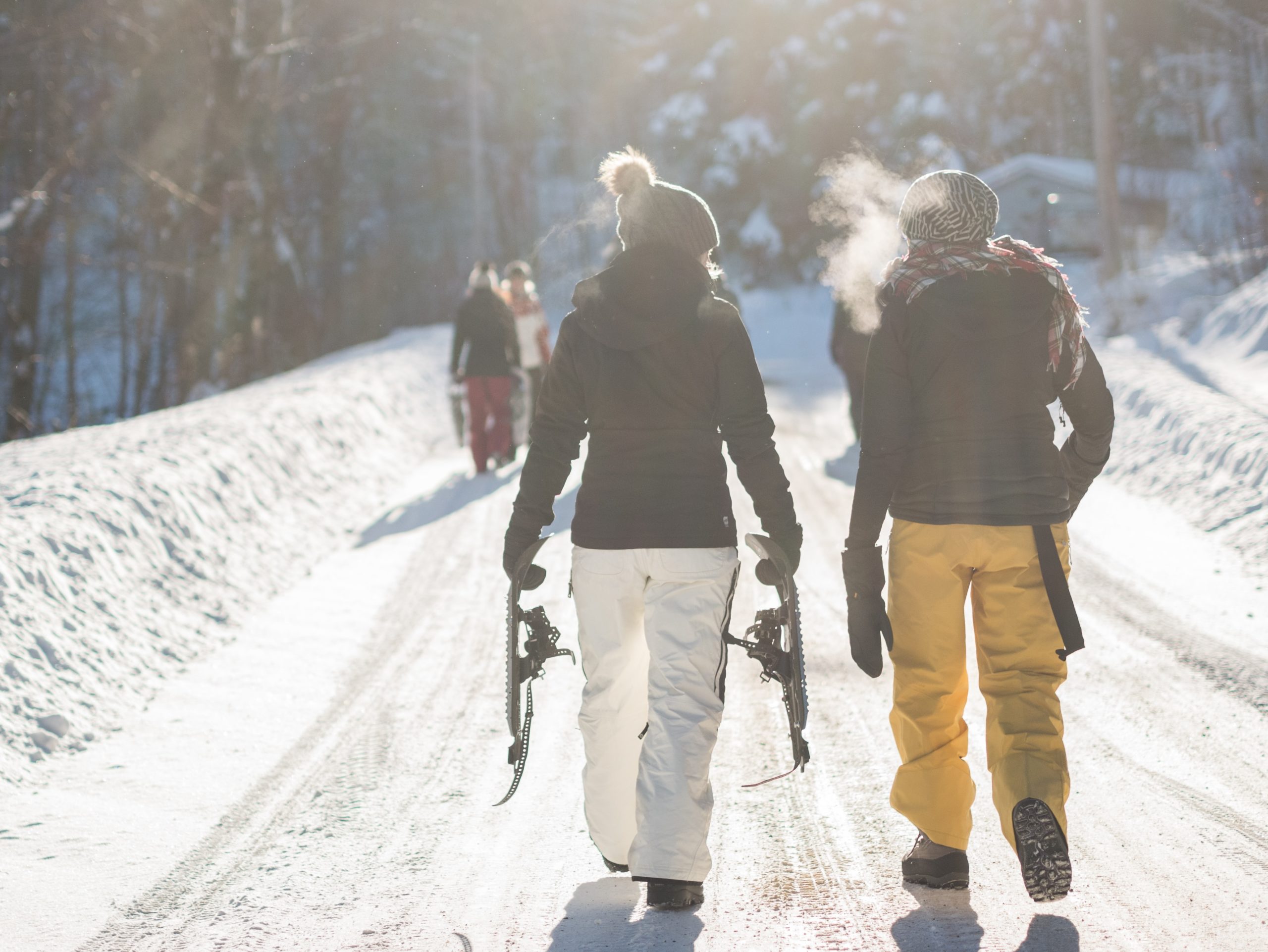
6. Bláfjöll
Even though we just crowned Reykjadalur as the gateway to the south coast- some could argue that that title truly belongs to Bláfjöll. Known as the “blue mountains”, Bláfjöll is a small mountain range that lies about 30 km from Reykjavik, just before Hveragerði.
Though popular for hiking, caving, and lava tubing pursuits- this area shares its name with the ski slopes that live amongst them. Driving through this area is one of your first tastes of wild country outside the capital, and it provides many quiet spots for aurora watching off the main road.
If you visit before the snow, you may get to experience a different type of lush covering- Bláfjöll’s endless fields of Icelandic moss. This moss covers the lava fields and huge swaths of the mountains themselves and can be seen for miles around.
Insulated by the snow in the height of winter, it returns to us every year despite its fragility. The moss takes ages to regrow after damage, so be careful not to walk upon it when hiking.
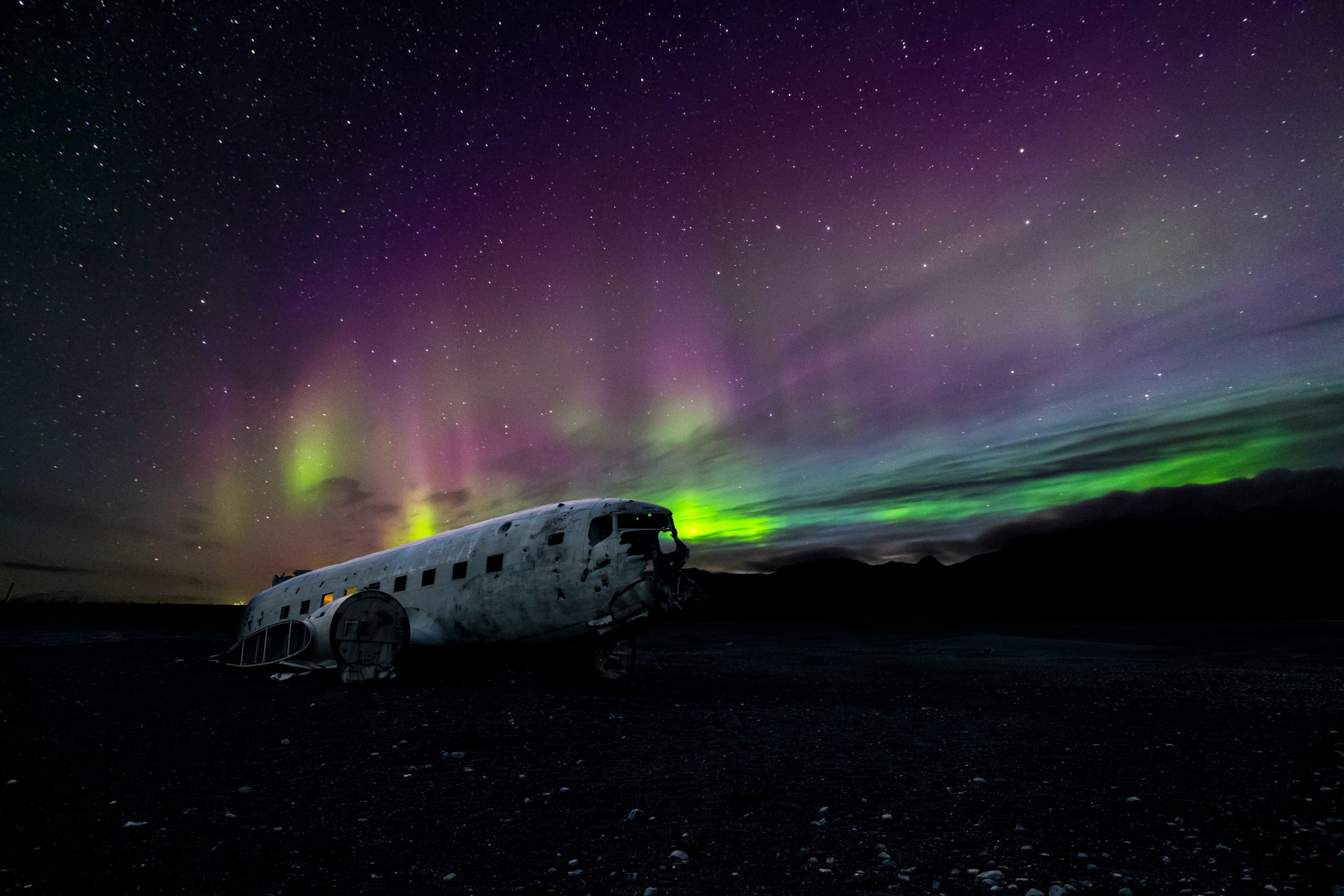
7. The plane wreck at Sólheimasandur
One of the more unusual stops, this is a pretty interesting one. Though it sounds grim, this plane wreck was non-fatal, and all of the passengers escaped unharmed. In 1973, a US Navy DC plane appeared to run out of fuel and had to crash land on Sólheimasandur– a vast black sand beach on the south coast.
The people inside made it out, but they left their airplane behind. The wreck of this plane is still resting on the beach today, a bit worn and smoothed by the endless Icelandic wind and the movement of the volcanic sand. It is a favorite location of photographers, and many have watched the lights from its empty belly.
If you choose to visit this spot, please exercise caution. While it is a flat land hike, it does take around an hour of treading sand to reach the wreck, and it cannot be seen from the road. You can leave your vehicle in the parking area, but you can no longer drive up to the location. This area is vast, and it is not populated by many landmarks- so it is easy to get disoriented here.
Be aware of the weather before you head out, as there have been accidents of exposure and hypothermia in the past. It is possible to visit the location with a guide, but be respectful of the area nonetheless. Just like the moss, we wish to preserve the unique strangeness of the wreck for years to come- so that many can spy the aurora from its wings.
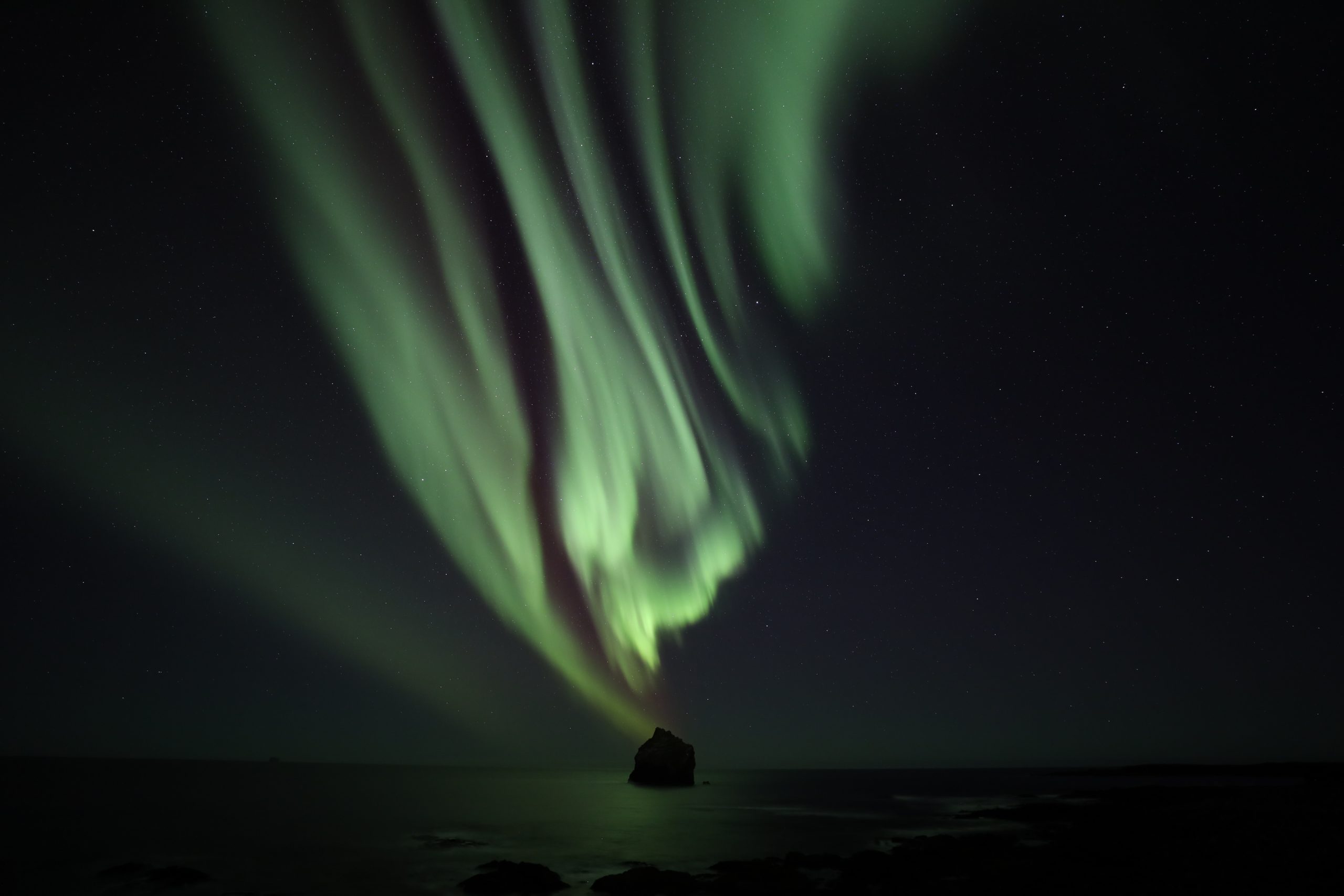
8. Þorlákshöfn (Thorlakshofn)
Wedged right in the corner of the coast where the Reykjanes peninsula meets with the full curve of the island, lies the little town of Þorlákshöfn. Known around the country as one of the primary places to catch a ferry to the Westman Isles– this is a charming seaside town.
Right along the edge of the coast, there are gorgeous villages to explore, and this is only one of them. This town rests at the end of the Ölfusá river and counts many curiosities among its hiking trails, bustling port, and beautiful sights.
If you’re planning a night out of aurora watching by the sea, this is certainly a good place to stop for a bite first. (Or to ride ATVs, horses, do some rock climbing, check out some sea caves, and more!)
This is a beautiful community where you can appreciate the brevity of Icelandic living, and the relationship between the sea and the warm volcanic land in which that life continues to thrive.
When we asked “Where is the best place to see the northern lights?”, it was not hard to imagine this place. (But don’t end your adventure here! If the weather is mild, hop the ferry to the Westman Isles! Southern Iceland really is a whole world of its own.)
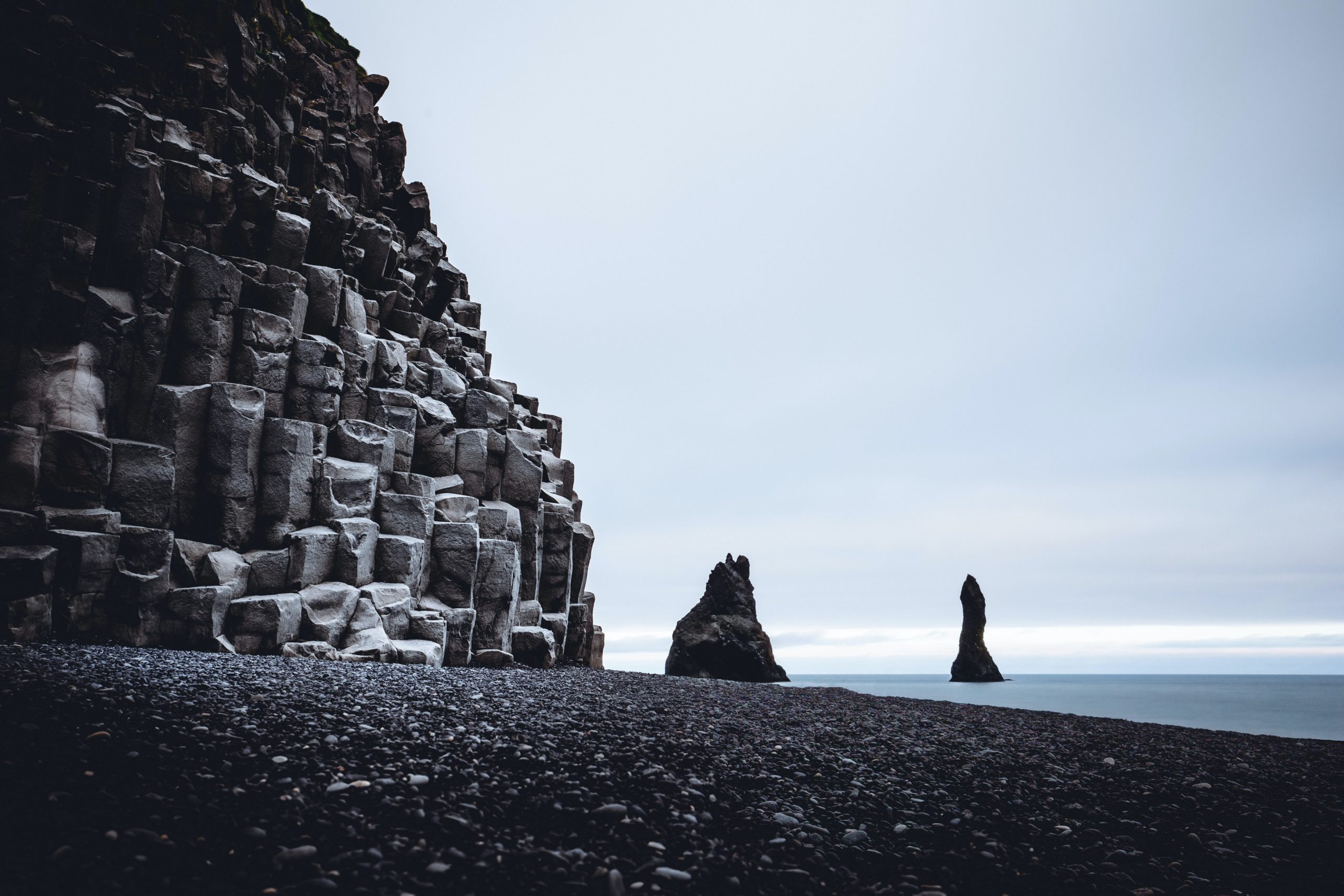
9. Reynisfjara
This is a popular spot, but it sure is hard to argue with. Reynisfjara is the name of the black sand beach near the village of Vík. Seen in countless films, tv productions, photographs, and artistic works- it’s a must see location.
Vík is the southernmost village on the island, and a great spot to branch out from if you plan on exploring the south coast region. Home to many activities, restaurants, and shops, this area is lined by dramatic basalt cliffs that thousands of seabirds call home in the summer season.
Though beautiful, the waves here can be massive and are known to be dangerous, so please exercise caution near the shoreline. Due to the small population of the town, you’ll find great dark skies here. We love Reynisfjara year round, but it truly is a magical place to watch the northern lights, in the shadow of slumbering Katla.
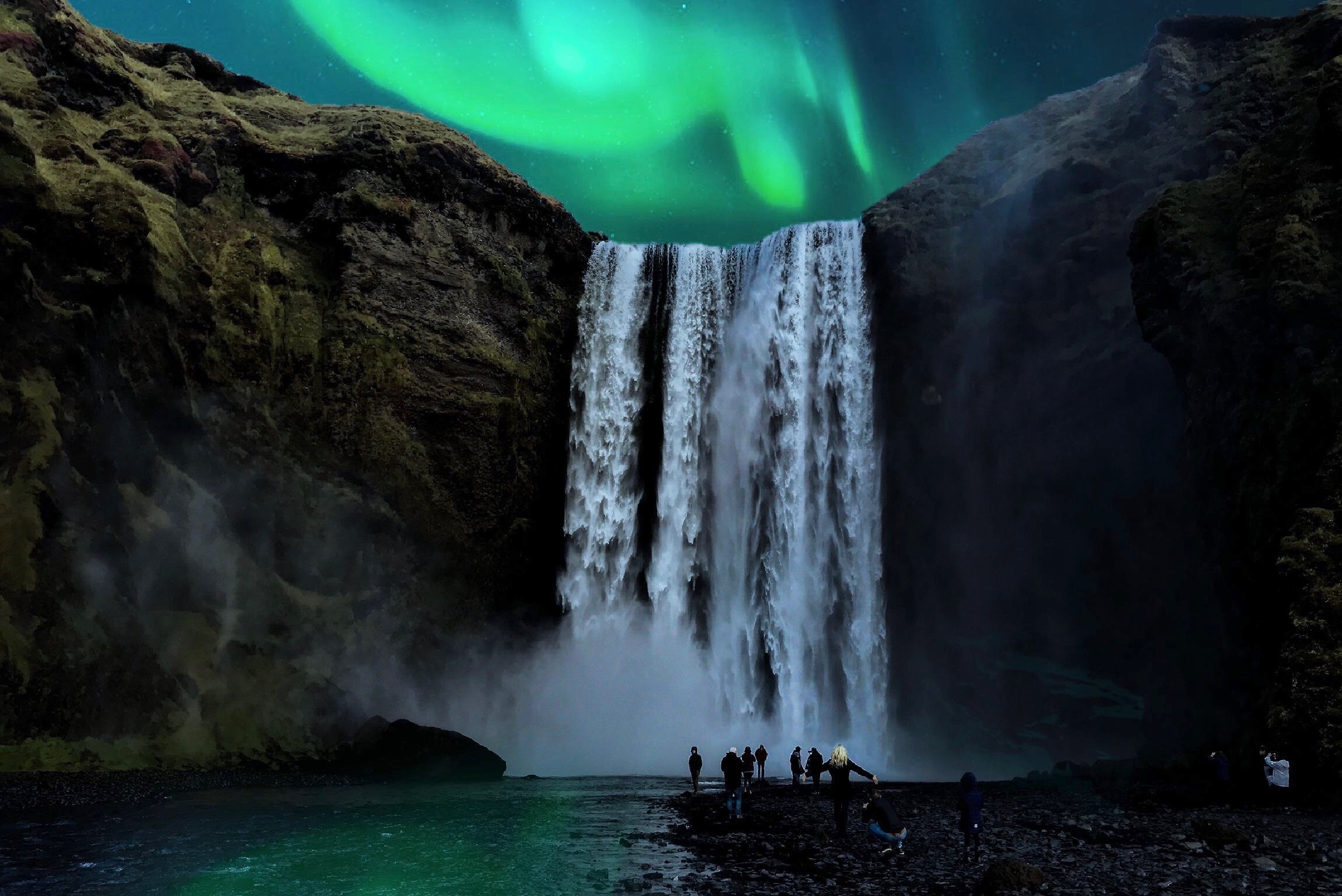
10. Skógafoss
Last but not least, we can’t leave this thundering giant off of a south coast adventure list. Not only is it close to some of our favorite northern lights hotels, but it makes an incredible aurora vantage point.
If you visit earlier in the day, you can climb to the top of the falls and enjoy the 25+ waterfall trek known as waterfall way! (You thought the show was just Skógafoss? Guess again!)
Skógafoss is the grand finale of the Fimmvörðuháls path, a 22 km. trek into the hiker’s paradise, Thórsmörk. While this adventure might not be possible in high winter, you can catch the tail end of its availability in autumn. For those that don’t wish to make the full 22 km., waterfall way is only about 8 km. one way, following the river.
But this is extra. Skógafoss itself is phenomenal. Standing at 60 m. high and 25 m. across, you can see this wonder right from the main road. It creates huge clouds of mist, and it empties out on a vast plane of land that runs out to the sea.
You could spend a whole day here exploring the surrounding area and enjoying the falls from different vantage points. You can even throw up a tent and camp out nearby, lulling yourself to sleep to the constant hum of falling water. Don’t forget to look up though! The rainbows in the mist during the day are hard to compare to the aurora curving over the cliff edge at night.
